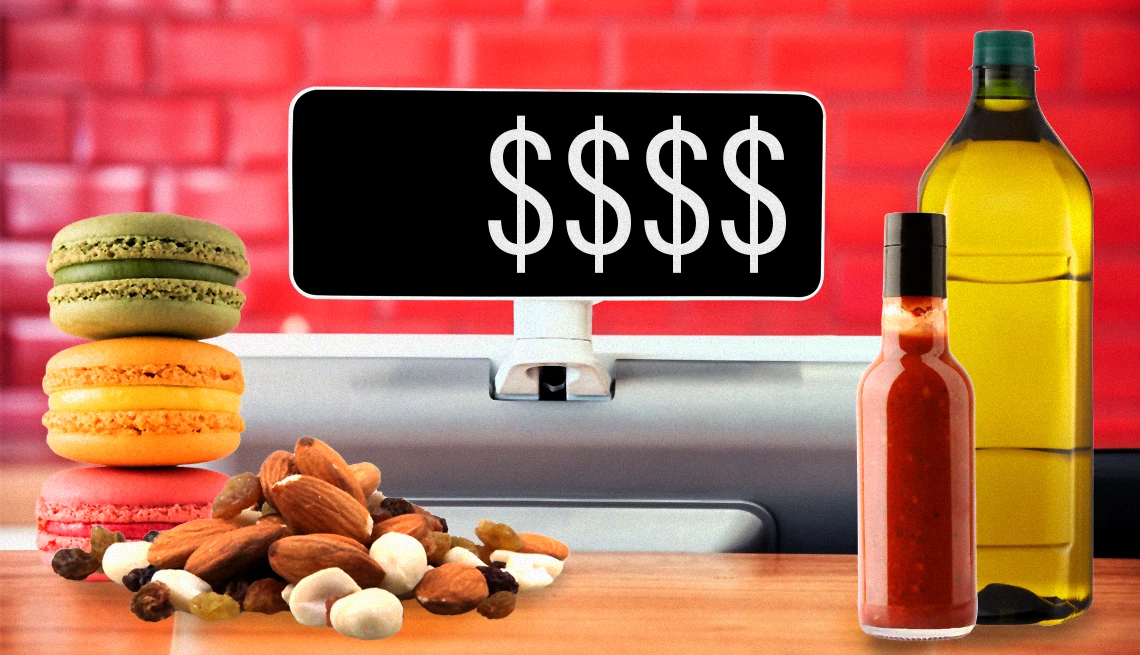AARP Hearing Center


If you’ve been feeling the strain of rising food costs, you’re not alone. More than half of Americans say grocery expenses are a major source of stress, according to a July 2025 poll from the Associated Press-NORC Center for Public Affairs Research.
Using smart shopping strategies such as taking advantage of sales, coupons and grocery store discounts for older customers can help you save money at the supermarket, but it’s possible to go overboard in an effort to keep costs down. Nutritionists and dietitians say it makes sense to spend a little more when buying certain foods that offer greater value.
Here are six grocery items they recommend splurging on — and two that aren’t worth the investment.
What to splurge on
1. Condiments and seasonings
Buying only a few basic spices and sauces to save money can backfire, because you’re more likely to order takeout if nothing in your refrigerator or pantry looks appealing, says Tiffany Bruno, a registered dietitian in Las Vegas and director of education at Switch4Good, a nonprofit that encourages a dairy-free lifestyle. She recommends spending a little more to have a variety of condiments and salad dressings on hand that you can use to “easily take a meal from bland to something you want to eat.”
Likewise, having a diverse collection of spices and seasonings can add variety to your meals and make cooking more enjoyable, says Amanda Sauceda, a registered dietitian in Long Beach, California. “Food gets boring when you prep it the same way,” she says. “A vegetable is only good if you eat it. You don’t want it to come into your refrigerator and go into the trash can.”
Pro tip: Sauceda recommends buying the smallest container possible when trying a spice for the first time to avoid wasting money if you don’t like it. Opting for the store brand over pricier brand-name seasonings can help you save money, too, and “you won’t notice a difference in quality,” Bruno says.
2. Extra-virgin olive oil
Olive oil can cost three to four times as much as canola or vegetable oil. But it’s worth the splurge, says Carrie Lupoli, a board-certified nutritionist.
Olive oil contains healthy fats that are good for brain health, she says. Moreover, studies have found that it’s linked to a lower risk of cardiovascular disease and type 2 diabetes, lower bad cholesterol and even lower mortality rates, especially when substituted for high-fat butter or margarine in recipes.
If it fits in your budget, buy extra-virgin olive oil — it typically costs more, but it’s less processed and contains more polyphenols than other types of olive oil, according to the Cleveland Clinic. Polyphenols have antioxidant and anti-inflammatory properties that can protect you from chronic conditions and illnesses.
Pro tip: Sauceda says that higher quality extra-virgin olive oil often tastes noticeably better than less expensive options. Still, you can save money by using a cheaper olive oil for everyday cooking and keeping the extra-virgin for times when you want to add special flavor to salad dressings, marinades and dips, she says.


































































More From AARP
13 Smart Tips for Online Grocery Shoppers
More older adults are getting food delivered to their doorstep
How to Stop Overspending at the Supermarket
These ten money-wasters may be why25 Ways To Cut Your Grocery Costs
Food prices are still elevated, but there’s ways to save